History
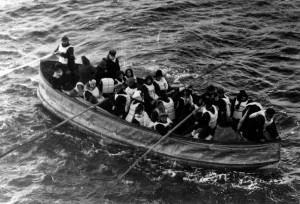 Whenever a big train wreck, plane crash, ship sinking, or other major accident occurs, someone must investigate. Depending on what happened, it can be someone like the NTSB, or in some cases, as in the Titanic sinking, it can go as high as the Senate. Of course, answers need to be found, so that corrections in procedure can be made.
Whenever a big train wreck, plane crash, ship sinking, or other major accident occurs, someone must investigate. Depending on what happened, it can be someone like the NTSB, or in some cases, as in the Titanic sinking, it can go as high as the Senate. Of course, answers need to be found, so that corrections in procedure can be made.
In the case of the Titanic, the accident was brought before the Senate Commerce Committee. I think most of us know the story of the Titanic well, given the movies and documentaries that have come out about it. The official final report, however, went into much more detail than most people know about, and more than I can go into here. I think most of us know that the ship was not sufficiently run through the test trials to properly break in the engines. Nevertheless, the Titanic was run at full speed through trecherous waters, without regard for the damage that could have come to pass.
In addition to this problem, it was noted that many of the crew members did not join the ship until just a few hours before it sailed, and the only drill carried out, consisted of lowering just two lifeboats on the starboard side into the water. There was no boat list designating the stations members of the crew were posted to until several days after sailing. This left the crew in ignorance of their stations until the following Friday morning. Of course, as we all know, there were not enough lifeboats on the ship, because it was thought to clutter the deck, and to be unnecessary. In reality there were only boats enough for only 1,176 of the 2,228 people on board…and of those, only 710 survived, meaning that lifeboats were lowered only partially loaded. Had the Titanic been loaded to full capacity, which was 3,339 passengers and crew, there would have only been room for a third of the people on the lifeboats. and as was the case of only loading the lifeboats half full, 2,629 people would have died.
It was the conclusion of the Senate Commerce Committee, that there were several areas of gross negligence 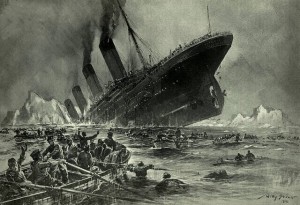 on the part of White Star Line and the crew of the Titanic. In fact the committee was actually appalled, as it should have been. They called the Titanic, and unnecessary tragedy. Improperly trained crew and improper procedures, can be a deadly mix, and as was the case with Titanic, death is what ensued. Many laws have changed as a result of the hearings, but I have to wonder why it takes such a devastating accident to bring about a proper, concervative apporoach to the handling of many areas of transportation, construction, and work ethic. To me, it seems a little late to try to put proper safety methods in place when the ship has already sunk, but then I guess it does protect those who will come after.
on the part of White Star Line and the crew of the Titanic. In fact the committee was actually appalled, as it should have been. They called the Titanic, and unnecessary tragedy. Improperly trained crew and improper procedures, can be a deadly mix, and as was the case with Titanic, death is what ensued. Many laws have changed as a result of the hearings, but I have to wonder why it takes such a devastating accident to bring about a proper, concervative apporoach to the handling of many areas of transportation, construction, and work ethic. To me, it seems a little late to try to put proper safety methods in place when the ship has already sunk, but then I guess it does protect those who will come after.
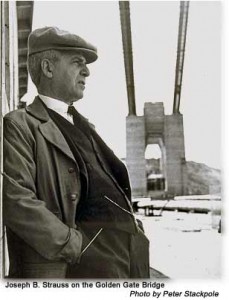 Some challenges are tougher than others, and the challenge to connect San Francisco with Marin County, California rates right up there among the most difficult…at least in 1937. I’m sure there have been bigger challenges since then and even before then, but I think that building what was the longest suspension bridge in the world in 1937 had to be really difficult. The bridge, which was built between January 1933 and May 1937, was to be 4,200 feet long. Its location was probably the biggest challenge the builders faced. The bridge is very close to the San Andreas Fault, which runs north and south directly through the San Francisco area. The bridge had to be built in such a way as to ensure its stability in the event of an earthquake. While earthquakes can happen anywhere in the world, it is such a strange idea to me to build something that depends on solid ground, on a known fault. Nevertheless, the bridge still stands today, and there have been many earthquakes in that area.
Some challenges are tougher than others, and the challenge to connect San Francisco with Marin County, California rates right up there among the most difficult…at least in 1937. I’m sure there have been bigger challenges since then and even before then, but I think that building what was the longest suspension bridge in the world in 1937 had to be really difficult. The bridge, which was built between January 1933 and May 1937, was to be 4,200 feet long. Its location was probably the biggest challenge the builders faced. The bridge is very close to the San Andreas Fault, which runs north and south directly through the San Francisco area. The bridge had to be built in such a way as to ensure its stability in the event of an earthquake. While earthquakes can happen anywhere in the world, it is such a strange idea to me to build something that depends on solid ground, on a known fault. Nevertheless, the bridge still stands today, and there have been many earthquakes in that area.
The second challenge the builders faced was the tumultuous waters the bridge had to span. The dangers that presented for the underwater construction were grave. The construction teams started their work on the peninsulas, building out over the wind-whipped waters of the San Francisco Bay. With labor and 70,000 tons of steel, they built arms that reached out to each other over the straits, getting closer by the day. Given the strait’s precarious mixture of violent winds, swirling currents, and thick fogs, many thought such a bridge couldn’t be built. Nevertheless, the builders have prevailed against the challenges they faced, because the bridge was completed successfully. In all, eleven men would lose their lives during construction, ten of them on February 17, 1937 when a section of scaffold carrying twelve men fell through the safety net.
I think the biggest challenge, that did not involve the elements, was a city who was skeptical and many people who were simply against a bridge across the San Francisco Bay. Nevertheless, Joseph Strauss, the engineer fought for 16 years to convince the people that the bridge was an amazing idea. He was a very proud man when he, on opening day, triumphantly exclaimed, “The bridge which could not and should not be built, which the War Department would not permit, which the rocky foundation of the pier base would not support, which would have no traffic to justify it, which would ruin the beauty of the Golden Gate, which could not be completed within my costs estimate of $27,165,000, stands before you in all its majestic splendor, in complete 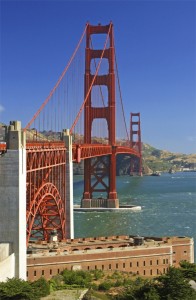 refutation of every attack made upon it.”
refutation of every attack made upon it.”
And so it was that the seemingly impossible was accomplished. The bridge was set to open on May 27, 1937, and by 6:00am, 18,000 people were lined up on both the San Francisco and the Marin county sides. In all, about 200,000 people showed up that day. At the appointed hour, a foghorn blew, and the toll gates opened. The earliest arrivals would have the distinction of being among the first to cross. Many offices, schools, and stores closed to attend the great event. The day was designated Pedestrian Day. The next day, he bridge opened to vehicle traffic. President Franklin Delano Roosevelt proclaimed the bridge open to the world. By the end of that day, 32,000 vehicles had paid the tolls and crossed the historic bridge. In the 70 plus years it has been open, it is estimated that nearly 2 billion vehicles have crossed the bridge. The Golden Gate Bridge and the views it holds are beautiful, and I am happy to have been one of those people to have crossed it.
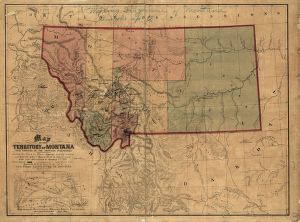 Many times, possibly to take the people’s minds off of long wars, presidents have worked to change some things back home. Sometimes that is a bad thing, and sometimes, as is the case on this day in 1864, it is a good thing. Abraham Lincoln was anxious to create new territories where people could settle during the Civil War, so on May 26, 1864, he signed an act establishing the Montana Territory. Abraham Lincoln had hoped to lift the spirits of the war weary, and open up the territory for gold exploration, but unfortunately the region was pretty unstable, so it didn’t do much to help the nation…at least not right away. In fact, it was so bad, that Sidney Edgerton, the territory’s first governor, fled after suffering through months of Indian raids. Some people probably thought of him as somewhat cowardly, but I think that months of Indian raids would make a man think that maybe he should get out before his number was up.
Many times, possibly to take the people’s minds off of long wars, presidents have worked to change some things back home. Sometimes that is a bad thing, and sometimes, as is the case on this day in 1864, it is a good thing. Abraham Lincoln was anxious to create new territories where people could settle during the Civil War, so on May 26, 1864, he signed an act establishing the Montana Territory. Abraham Lincoln had hoped to lift the spirits of the war weary, and open up the territory for gold exploration, but unfortunately the region was pretty unstable, so it didn’t do much to help the nation…at least not right away. In fact, it was so bad, that Sidney Edgerton, the territory’s first governor, fled after suffering through months of Indian raids. Some people probably thought of him as somewhat cowardly, but I think that months of Indian raids would make a man think that maybe he should get out before his number was up.
I’m sure we would all have to agree that now, Montana is a key part of the nation…especially in the area of 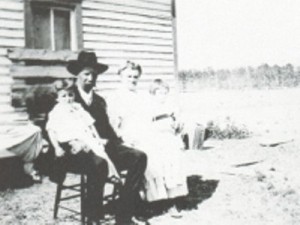 agriculture, just not back then. Nevertheless, this new territory belonged to the United States, for better or worse. Montana Territory in the 19th century was home to the Sioux, the Blackfoot, the Shoshone, the Arapaho, the Cheyenne, the Kutenai and the Flathead Indians. That had to be a large number of Indians…and all were feeling like you were invaders in their territory…which you probably were. They decided that the best course of action was to raid your place, steal what they wanted, and kill those they needed to. It would make for a dangerous place to be.
agriculture, just not back then. Nevertheless, this new territory belonged to the United States, for better or worse. Montana Territory in the 19th century was home to the Sioux, the Blackfoot, the Shoshone, the Arapaho, the Cheyenne, the Kutenai and the Flathead Indians. That had to be a large number of Indians…and all were feeling like you were invaders in their territory…which you probably were. They decided that the best course of action was to raid your place, steal what they wanted, and kill those they needed to. It would make for a dangerous place to be.
Montana Territory came into United States possession as part of the Louisiana Purchase in 1803. Within a couple of years, there were explorers, including Lewis and Clark, who were the first known explorers of European origin to pass through the region on their way to the Pacific Ocean. Still, the area remained pretty much untouched, until gold was discovered in the 1850s. That discovery brought people to mining camps such as those at Bannack and Virginia 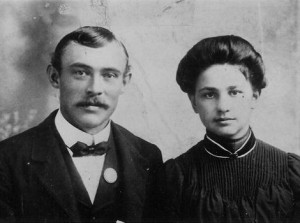 City, Montana, finally bringing growth to the territory. There are several members of my family, and of my husband, Bob Schulenberg’s family who came to Montana in those days. I’m not sure if they were there to hunt for gold, or just to get land, but they lived there for many years, and many of them still do to this day. I’m sure it was that territorial growth that brought the area to the attention of Abraham Lincoln when he decided that making the area an official territory was in the nations best interest at the time. While it would be another 25 years before Montana would official become the 41st state in the Union, I have to think it was worth waiting for. Montana is a beautiful state, and while their winters are a little more extreme than I would be comfortable with, I do love to visit there.
City, Montana, finally bringing growth to the territory. There are several members of my family, and of my husband, Bob Schulenberg’s family who came to Montana in those days. I’m not sure if they were there to hunt for gold, or just to get land, but they lived there for many years, and many of them still do to this day. I’m sure it was that territorial growth that brought the area to the attention of Abraham Lincoln when he decided that making the area an official territory was in the nations best interest at the time. While it would be another 25 years before Montana would official become the 41st state in the Union, I have to think it was worth waiting for. Montana is a beautiful state, and while their winters are a little more extreme than I would be comfortable with, I do love to visit there.
 Our country has been involved in so many wars in its relatively short history, protecting both our freedom and many other countries from the oppression imposed by so many evil dictators and nations. Some people don’t think the United States should be the guardian of the nations, but when push comes to shove, the United States is always the one they call to come in and save them. In all reality, the only countries who wish we would just stay out of things, are the ones who have overstepped their boundaries, and are trying to do evil in the helpless nations they have occupied.
Our country has been involved in so many wars in its relatively short history, protecting both our freedom and many other countries from the oppression imposed by so many evil dictators and nations. Some people don’t think the United States should be the guardian of the nations, but when push comes to shove, the United States is always the one they call to come in and save them. In all reality, the only countries who wish we would just stay out of things, are the ones who have overstepped their boundaries, and are trying to do evil in the helpless nations they have occupied.
Of course, no military machine can function without the sacrifice in time and lives of people. Military men and women who are willing to make that sacrifice are a rare breed indeed. True, in years past there was a draft, but even then, there were those who volunteered, like my dad and many others. They saw a need, and knew that they had to answer the call to duty.
Over the course of the major wars the United States has been involved in beginning at World War I, we have lost a total of 619,300 men and women. That is an astounding number of people. Fighting evil is a costly business, both in money, and more importantly in the lives we have lost. Nevertheless, if we allow evil to prevail, we are in a far worse position. That is something every soldier knows all too well. It is what brings them to the point of making the decision to serve…to fight, and give their lives if necessary. It isn’t that they don’t know what they are getting into, because they do. They know that as a soldier, they will be taking the 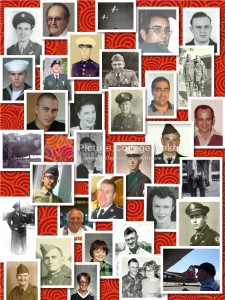 ultimate chance with their life, and they know that they may lose their life. And yet they serve. That is the picture of a true hero.
ultimate chance with their life, and they know that they may lose their life. And yet they serve. That is the picture of a true hero.
There are those who condemn our soldiers for their sacrifice, those who protest, and scream hate at them, but what they don’t really understand is that their very right to protest, scream, and even hate, comes from the fight our soldiers have waged to protect that very freedom. It is a tough job, and often thankless, but they fight because they can see what is right and what is wrong. It is wrong for anyone to steal the freedoms of another human being, and it is wrong for them to try to force their will on others. Soldiers have the vision to see this, and even when hate is aimed at them, they will fight for the rights of those who hate. Yes, soldiers are a rare breed, and they are heroes. They deserve our respect, and they deserve the honor and respect that this day is all about. Happy Memorial Day!! Be sure to thank a Veteran today.
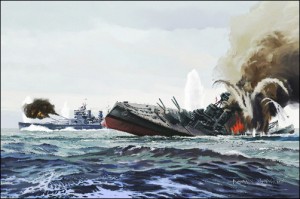 Growing up, our house was often filled with country music. Some of it my sisters and I liked, and some we didn’t. We were, after all, a part of the Rock and Roll era. Of those songs, I really liked the ones that told a story the best…still do in fact, especially when it concerns historical events. One song that we heard many times was called, “Sink the Bismarck” by Johnny Horton. It was a song with words that were easy to learn, and I quickly knew it by heart. I’ve never forgotten that song. At the time the words really meant nothing to me, but I’m sure they meant something to my dad.
Growing up, our house was often filled with country music. Some of it my sisters and I liked, and some we didn’t. We were, after all, a part of the Rock and Roll era. Of those songs, I really liked the ones that told a story the best…still do in fact, especially when it concerns historical events. One song that we heard many times was called, “Sink the Bismarck” by Johnny Horton. It was a song with words that were easy to learn, and I quickly knew it by heart. I’ve never forgotten that song. At the time the words really meant nothing to me, but I’m sure they meant something to my dad.
The Bismarck was a German battleship. It was the first of two Bismarck class battleships built for Nazi Germany’s Kriegsmarine. Its sister ship was the Tirpitz. The two ships were the largest battleships ever built by Germany, and two of the largest built by any European power. The Bismarck was named for Chancellor Otto von Bismarck, the primary force behind the unification of Germany in 1871. It was commissioned on August 24, 1940. These ships had huge guns…according to the song, “guns as big as steers 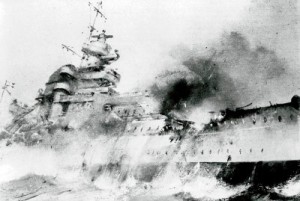 and shells as big as trees.” The Bismarck had been dubbed the “Terror of the Sea.” The British generals had heard all about this ship, and there was serious cause for concern, because it could do horrible damage.
and shells as big as trees.” The Bismarck had been dubbed the “Terror of the Sea.” The British generals had heard all about this ship, and there was serious cause for concern, because it could do horrible damage.
At this point in World War II, the only way move through the war zone with relative safety was to be on a U-Boat. In May 1941, the Bismarck was ordered to break out into the Atlantic. Once it was safely in the open ocean, it would be very hard to track. Then it could wreak havoc on the Allied ships. The British heard of the plans, and sent the battle cruiser Hood and the battleship Prince of Wales in hot pursuit. They caught up to the Bismarck near Iceland and a battle ensued. The Bismarck sunk the battle cruiser Hood…it would be the only ship it would ever sink. The Hood was hit, exploded, and sank, taking with it all but three of the 1,421 crewmen. The Bismarck was hit but escaped. Nevertheless, it was leaking fuel and so it fled trying for occupied France. It was spotted by British aircraft and crippled. On May 27, three warships descended on it and sunk it.
 Just as the song had said, “We gotta sink the Bismarck ’cause the world depends on us.” The British navy knew that this ship had to go, because if it was left alone, it would be repaired and it would once again wreak havoc on the Allied ships. The song has always remained in my head, but once I knew about the ships and the real battle that had taken place, it meant something to me, just like it had always meant something to my dad. I knew of the sacrifices, the lives lost, and the ship lost. This song was not just about some long ago battle that the world has forgotten, but rather it is about one battle in a war that can never be forgotten. And a war that would eventually draw my dad and many of my uncles into it before it was over, because the world depended on them too.
Just as the song had said, “We gotta sink the Bismarck ’cause the world depends on us.” The British navy knew that this ship had to go, because if it was left alone, it would be repaired and it would once again wreak havoc on the Allied ships. The song has always remained in my head, but once I knew about the ships and the real battle that had taken place, it meant something to me, just like it had always meant something to my dad. I knew of the sacrifices, the lives lost, and the ship lost. This song was not just about some long ago battle that the world has forgotten, but rather it is about one battle in a war that can never be forgotten. And a war that would eventually draw my dad and many of my uncles into it before it was over, because the world depended on them too.
 As I was looking through my Uncle Bill Spencer’s family history account, I can across a Princess named, Joan of Acre. I wondered if this was a mistake on my uncle’s part or within some of the research that was out there, I wondered if they had indeed meant Joan of Arc. Joan of Arc, however, was a completely different person. The name was close enough that I thought maybe it was an error, but it wasn’t. Joan of Arc was born in 1412, and died on May 30, 1431, while Joan of Acre was born on April 1272 and died on April 23, 1307. Joan of Acre was an English princess, a daughter of King Edward I of England and Queen Eleanor of Castile. The name “Acre” comes from her birthplace in the Holy Land while her parents were on a crusade. Joan had sixteen full siblings, only five of which survived to adulthood, and at least three half siblings.
As I was looking through my Uncle Bill Spencer’s family history account, I can across a Princess named, Joan of Acre. I wondered if this was a mistake on my uncle’s part or within some of the research that was out there, I wondered if they had indeed meant Joan of Arc. Joan of Arc, however, was a completely different person. The name was close enough that I thought maybe it was an error, but it wasn’t. Joan of Arc was born in 1412, and died on May 30, 1431, while Joan of Acre was born on April 1272 and died on April 23, 1307. Joan of Acre was an English princess, a daughter of King Edward I of England and Queen Eleanor of Castile. The name “Acre” comes from her birthplace in the Holy Land while her parents were on a crusade. Joan had sixteen full siblings, only five of which survived to adulthood, and at least three half siblings.
The Princess was married twice. Her first husband was Gilbert de Clare who was the 7th Earl of Gloucester, was one of the most powerful nobles in her father’s kingdom. They married on April 30, 1290, and their short marriage produced four children…Gilbert de Clare, Eleanor de Clare, Margaret de Clare, Elizabeth de Clare. He passed away just about five years after their marriage, leaving her to raise the young children…a totally different thing than these days, given her stature and all the help she would have had. Her second husband was Sir Ralph de Monthermer who a squire in her household. She married him in secret in 1297, probably due to the fact that he would not have been a suitable match in those days…sad to think about really. I never could understand the whole purpose behind stature or other arranged marriages, but times were different, and I can’t say that our current divorce rate speaks well for making our own choices either. The marriage didn’t remain a secret for long however, because they had four children as well…Mary de Monthermer,  Joan de Monthermer, Thomas de Monthermer, Edward de Monthermer. After the marriage, her father, who was not happy about the marriage, nevertheless, gave in and her husband was given the same titles that her first husband had held.
Joan de Monthermer, Thomas de Monthermer, Edward de Monthermer. After the marriage, her father, who was not happy about the marriage, nevertheless, gave in and her husband was given the same titles that her first husband had held.
History does not record the cause of Joan’s death on April 23, 1307, but many suspect that it was in childbirth. She was best known for her rebellious second marriage, as it was pretty much an unheard of event at that time. Joan’s father died just four months after she did, Joan’s widower, Ralph de Monthermer, lost the title of Earl of Gloucester soon after the deaths of his wife and father-in-law. The earldom of Gloucester was given to Joan’s son from her first marriage, Gilbert, who was its rightful holder. Monthermer continued to hold a nominal earldom in Scotland, which had been conferred on him by Edward I, until his death. While that may have stung a little, I have to think that her second husband loved her more than the titles.
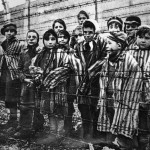 Many of the history books of today try to remove or minimize the Holocaust, and some people don’t even believe that it was real, but that couldn’t be further from the truth. The Holocaust took place between 1941 and 1945. In 1933, the Nazis came into power in Germany and they believed that the Germans were a superior race. They were completely against any people of different backgrounds…especially the Jewish people, who they felt were an inferior race, and were a danger to the German Racial Community. During the Holocaust, the Jewish people were systematicaly removed from their homes, made to be slaves, used for scientific experiments, and many died or were killed in the Gas Chambers.
Many of the history books of today try to remove or minimize the Holocaust, and some people don’t even believe that it was real, but that couldn’t be further from the truth. The Holocaust took place between 1941 and 1945. In 1933, the Nazis came into power in Germany and they believed that the Germans were a superior race. They were completely against any people of different backgrounds…especially the Jewish people, who they felt were an inferior race, and were a danger to the German Racial Community. During the Holocaust, the Jewish people were systematicaly removed from their homes, made to be slaves, used for scientific experiments, and many died or were killed in the Gas Chambers.
On this day in 1942, a stunning 4,300 Jews are deported from the Polish town of Chelm to the Nazi extermination camp at Sobibor, where all are gassed to death. Between 1942 and 1943, there were about 250,000 Jewish prisoners who lost their lives in the five gas chambers housed there. Then in October 1943, a 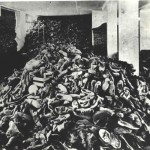 camp revolt occurred…300 Jewish slave laborers rose up and killed several members of the SS…Schutzstaffel (German translation: “Protective Echelon), as well as Ukrainian guards. The rebels were killed as the battled against the guards or tried to escape. The remaining prisoners were executed the very next day. I can’t even begin to imagine what incredible bravery it took to even make such an attempt. They had no weapons with which to engage in a battle. They were simply fighting for their lives, knowing that they would most likely lose. It was better to fight and die, than to live this way.
camp revolt occurred…300 Jewish slave laborers rose up and killed several members of the SS…Schutzstaffel (German translation: “Protective Echelon), as well as Ukrainian guards. The rebels were killed as the battled against the guards or tried to escape. The remaining prisoners were executed the very next day. I can’t even begin to imagine what incredible bravery it took to even make such an attempt. They had no weapons with which to engage in a battle. They were simply fighting for their lives, knowing that they would most likely lose. It was better to fight and die, than to live this way.
Also on this day, the German firm IG Farbe set up a factory just outside Aushwitz in order to take full advantage of the Jewish slave laborers from the Auschwitz concentration camps. IG Farben was a German chemical industry conglomerate. Its name is taken from Interessen-Gemeinschaft Farbenindustrie AktienGesellschaft which literally means “community of interests” of, in this case dye-making corporations. In addition to exploiting the Jewish slave labor for its oil and rubber production, IG Farben performed drug experiments on the slaves. Tens of 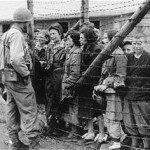 thousands of the slaves would lose their lives to the brutal work conditions and savage treatment received from the guards. In the aftermath, several of the firm’s officials would be convicted of plunder, spoilage of property, forced slave labor, and inhumane treatment of civilians and prisoners of war. The firm went under Allied control for the purpose of completely dismantling it, because it was a threat, but as resolve weakened, the firm was eventually divided into three companies, Hoechst…a chemical and pharmaceutical company, Bayer…a company we all know, and BASF…Badische Anilin und Soda Fabrik, also a chemical company. I suppose that one could say that in the end, some good came from these companies, but knowing their history tends to make it a little difficult to get past their origin, or their complete and total disregard for human life in the past.
thousands of the slaves would lose their lives to the brutal work conditions and savage treatment received from the guards. In the aftermath, several of the firm’s officials would be convicted of plunder, spoilage of property, forced slave labor, and inhumane treatment of civilians and prisoners of war. The firm went under Allied control for the purpose of completely dismantling it, because it was a threat, but as resolve weakened, the firm was eventually divided into three companies, Hoechst…a chemical and pharmaceutical company, Bayer…a company we all know, and BASF…Badische Anilin und Soda Fabrik, also a chemical company. I suppose that one could say that in the end, some good came from these companies, but knowing their history tends to make it a little difficult to get past their origin, or their complete and total disregard for human life in the past.
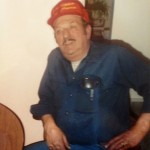 In the United States, you don’t often expect to become friends with a Russian man, but that is exactly what happened with my dad, Allen Spencer. Dad was working at WOTCO in Casper at the time, and his friend, Vladimir worked there as well. For Vladimir, the United States was the epitome of the word freedom. He loved the United States, and as an immigrant, who loved the United States, he wanted to learn the language. He was working very hard on it when he and my dad met. Dad was excited about Vladimir too. He had never known anyone from Russia, and really, never expected to. He told Mom and my younger sister, Allyn Hadlock that there was a Russian man working with him and he wanted to learn Russian so he could talk to him.
In the United States, you don’t often expect to become friends with a Russian man, but that is exactly what happened with my dad, Allen Spencer. Dad was working at WOTCO in Casper at the time, and his friend, Vladimir worked there as well. For Vladimir, the United States was the epitome of the word freedom. He loved the United States, and as an immigrant, who loved the United States, he wanted to learn the language. He was working very hard on it when he and my dad met. Dad was excited about Vladimir too. He had never known anyone from Russia, and really, never expected to. He told Mom and my younger sister, Allyn Hadlock that there was a Russian man working with him and he wanted to learn Russian so he could talk to him.
Dad bought a Russian/English dictionary, and began to study it. He had some specific phrases he wanted to learn, such as, Hello, How are you, Do you like America, and Do you have a family. Every night they sat down at the table to work through the dictionary, figuring out what he would say next. They also learned that certain symbols,  some that we use today, could mean something very different in Russian. The American symbol for “ok” is a good example. In Russian that symbol, with the circle of the thumb and forefinger, is a cuss word. It is very similar to flipping someone the bird. They laughed about that one. Then, when Dad wanted to say Dirty Rat, Allyn told him to use that American symbol for ok, because that should do it. That really got them laughing, and it still makes Allyn laugh to this day when she thinks about it.
some that we use today, could mean something very different in Russian. The American symbol for “ok” is a good example. In Russian that symbol, with the circle of the thumb and forefinger, is a cuss word. It is very similar to flipping someone the bird. They laughed about that one. Then, when Dad wanted to say Dirty Rat, Allyn told him to use that American symbol for ok, because that should do it. That really got them laughing, and it still makes Allyn laugh to this day when she thinks about it.
I think the thing that Vladimir liked so much about my dad was the fact that he tried to learn Russian, and that he reached out to a foreigner too. Vladimir and his wife didn’t have very many people that he could visit with…at least not in Russian. He was just so pleased that Dad was actually learning Russian. I’m not saying that Dad was fluent at Russian. In fact, his Russian could be considered comical at times, but the main thing was that he tried. Dad and Vladimir became the best of friends, and mom and Vladimir’s wife were friends too. They were invited to dinner at Vladimir’s house, and his wife made Borscht. Borscht is a beet soup. Now, I have to tell you that Dad must have really felt a friendship with Vladimir, because Dad hated beets, but he ate that soup. They told Mom and Dad that in Russia the people didn’t have very much meat, so their meals consisted of potatoes and vegetables. They were able to buy more meat now  though, since coming to America, so when they had their American friends over for dinner, they bought meat for the Borscht…mostly because Americans are used to eating meat.
though, since coming to America, so when they had their American friends over for dinner, they bought meat for the Borscht…mostly because Americans are used to eating meat.
Vladimir and his wife wanted to be like the American people, because they loved this country. The did their very best to Americanize everything they did, because they wanted to be true Americans. This was the true melting pot…every foreigners dream, and they wanted to be a part of it. Dad and his Russian co-worker became good friends, and Vladimir always appreciated Dad’s efforts to make him feel at home in a new land.
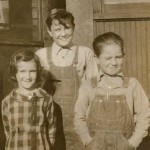
![10592837_10203606798789446_4580093225917977156_n[1]](https://carynschulenberg.com/wp-content/uploads/2015/05/10592837_10203606798789446_4580093225917977156_n1-150x150.jpg) Last night, while my sister, Cheryl Masterson and I were going through several boxes of our parents paperwork to prepare it for shredding, we came across a number of letters from different family members. I was drawn to some from my dad’s brother, William Spencer. One letter was written on March 5, 1990, and told a lot about the small town of Holyoke, Minnesota, where the family lived for a number of years. Uncle Bill talked of how the town was just a skeleton now, and so unlike its former self. I could read the sadness in his thoughts. Holyoke was a place that, in his childhood, had seemed larger than life. He knew every inch of it. He and my dad, their sister, Ruth, and their friends had dodged the trains, played ball, gone to school, fished the stream, and…well, lived life there. Uncle Bill was sad, because now, all that was changing.
Last night, while my sister, Cheryl Masterson and I were going through several boxes of our parents paperwork to prepare it for shredding, we came across a number of letters from different family members. I was drawn to some from my dad’s brother, William Spencer. One letter was written on March 5, 1990, and told a lot about the small town of Holyoke, Minnesota, where the family lived for a number of years. Uncle Bill talked of how the town was just a skeleton now, and so unlike its former self. I could read the sadness in his thoughts. Holyoke was a place that, in his childhood, had seemed larger than life. He knew every inch of it. He and my dad, their sister, Ruth, and their friends had dodged the trains, played ball, gone to school, fished the stream, and…well, lived life there. Uncle Bill was sad, because now, all that was changing.
Uncle Bill wrote of the passing of this friend, and that friend, as well as all the citizens, teachers, parents, and business owners who had lived in the little town of Holyoke. While the passing of the people he knew and loved was hard enough, the loss of the different buildings in the town was equally devastating to my dear Uncle Bill. I think the building that was the hardest for him to see go was the little church, which held the baptismal font that had been built in 1935 by Fritz Fredrick, who is the father of my cousins Gene and Dennis Fredrick. Fritz also did most of the cabinet work, too. It was very hard for Uncle Bill to think of that baptismal font being left to rot, so he bought it and gave it to one of Fritz’s sons. Uncle Bill writes about how sad it makes him to see the buildings delapitated and, in his words, forlorn. Nevertheless, he continues to be drawn to Holyoke because it feels like going home to him. He loves the people there, and loves to spend time visiting with them. Holyoke is and always will be a part of him…like it’s in his DNA.
Uncle Bill’s letter continues to draw me back to it in much the same way that Holyoke draws Uncle Bill back to ![10342804_10203606793869323_3232942561128602595_n[1]](https://carynschulenberg.com/wp-content/uploads/2015/05/10342804_10203606793869323_3232942561128602595_n1-150x150.jpg)
![10624963_10203606795149355_518549074166794281_n[1]](https://carynschulenberg.com/wp-content/uploads/2015/05/10624963_10203606795149355_518549074166794281_n1-150x150.jpg) it, because even if the feelings are raw and painful to a degree, it is harder not to make the trip than it is the deal with the feelings when you go back there. My mom, Collene Spencer, my sister, Cheryl Masterson, my cousin Bill Spencer (Uncle Bill’s son), and I visited Holyoke this past August while we were back in Superior, Wisconsin, and I can completely understand how Uncle Bill feels about that place. I don’t recall having been there before, but like my Uncle Bill, Holyoke, Minnesota will continue to live in my heart. I guess that some places simply have that affect on you.
it, because even if the feelings are raw and painful to a degree, it is harder not to make the trip than it is the deal with the feelings when you go back there. My mom, Collene Spencer, my sister, Cheryl Masterson, my cousin Bill Spencer (Uncle Bill’s son), and I visited Holyoke this past August while we were back in Superior, Wisconsin, and I can completely understand how Uncle Bill feels about that place. I don’t recall having been there before, but like my Uncle Bill, Holyoke, Minnesota will continue to live in my heart. I guess that some places simply have that affect on you.
 When most of us think of a space station, we think of the International Space Station that exists today, but in reality, that is not the first space station that ever floated above our atmosphere. The first one was a small space station called Skylab 1, The idea of a space station and crew to live and work in space was one that was tossed around for years. It was finally realized and launched into space on May 14, 1973, but this was not to be a mission without any issues.
When most of us think of a space station, we think of the International Space Station that exists today, but in reality, that is not the first space station that ever floated above our atmosphere. The first one was a small space station called Skylab 1, The idea of a space station and crew to live and work in space was one that was tossed around for years. It was finally realized and launched into space on May 14, 1973, but this was not to be a mission without any issues.
Just 63 seconds into the launch, a meteoroid shield that was supposed to shelter Skylab accidentally opened. This put Skylab 1 at serious risk. Later the facility experienced communications problems with the antenna as a direct result of the launch incident. Nevertheless, as problems go, this was the least of the agency’s worries. “When the meteoroid shield ripped loose, it disturbed the mounting of workshop solar array wing No. 2 and caused it to partially deploy. The exhaust plume of the second stage retro-rockets impacted the partially deployed solar array and literally blew it into space,” NASA wrote.
NASA scrambled to stabilize the space station and take necessary measures to minimize the posibility of overheating, as well as, figuring out a way to handle its reduced power situation. The first crew, which was led by Apollo 12 commander Pete Conrad, would need to make the station habitable before they could get to work. The crew’s first job, which took place during the spacewalk, just hours after launch, was to deploy the solar array, but that didn’t work, because the metal strip holding it is place, refused to release. The crews continued to be frustrated with this and other operations problems, before finally managing to make the space station work relatively well.
Skylab spent six years orbiting Earth until its decaying orbit caused it to re-enter the atmosphere. It scattered debris over the Indian Ocean and sparsely settled areas of Western Australia. In all, three crews successfully lived on board the station for several months each. The last crew spent 84 days in orbit. This was an an American record that stood until the shuttle era.
I’m sure that, looking back on those years now, NASA must have felt like it had been living in the stone age. With the Space Shuttle and the International Space Station, going into space in earlier days was rather archaic. Of course, with the end of the Space Shuttle era, we don’t know what the face of space travel will be in the  future. Only time will tell. Nevertheless, in 1973, we were well ahead of the rest of the world with the first space station, no matter how archaic it was.
future. Only time will tell. Nevertheless, in 1973, we were well ahead of the rest of the world with the first space station, no matter how archaic it was.
Because of multiple problems experienced by Skylab 1, the space station’s orbit decayed faster than expected. This was mostly due to intense solar activity heating up Earth’s atmosphere. Soon, NASA knew that it was inevitable that the space station would come down. They adjusted the station as much as possible so it wouldn’t hit populated areas upon re-entering on July 11, 1979. A slight mathmatical error led to pieces falling in Australia, but fortunately nobody was hurt, and thankfully that was not the end of the space stations.

